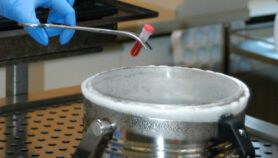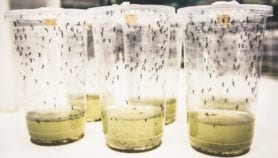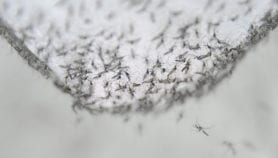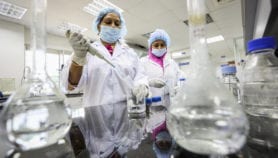By: Mićo Tatalović
Send to a friend
The details you provide on this page will not be used to send unsolicited email, and will not be sold to a 3rd party. See privacy policy.
Rice has been made to grow five times faster, and potatoes to require much less fertiliser, using a technique that introduces fungi to the roots of the crops.
Although some fungi can cause disease in crops (see Rice fungus blasts its way through roots too), others — known as mychorrhizal fungi — live in harmony with them, with both the plant and the fungus deriving benefit.
Fungi are known for extracting nutrients, such as phosphate, from the soil around a plant, which the plant can then use. The fungus, in turn, receives sugars produced by the plant through photosynthesis.
But so far, studies of this phenomenon have been done in temperate regions — with little evidence that these fungi could help improve crops such as rice, which grow in other climates.
Ian Sanders, a biologist at the University of Lausanne, Switzerland, said recent research has shown that the fungi can have a major impact on yield in the acidic soils of tropical regions.
"There, phosphate fertiliser gets bound to the soil which makes it difficult for crops to extract it without fungal help," he told SciDev.Net. Harnessing this process could become increasingly important, with global soil phosphate shortages predicted to occur in the coming decades (see Diminishing phosphorus threatens world’s agriculture).
Sanders’ team used traditional, non-GM approaches to breed fungi (Glomus intraradices) containing beneficial genes, and inoculated rice with them.
The genes aided the exchange of nutrients between the fungi and the rice roots, leading to five-fold faster rice growth, the researchers reported in Current Biology last week (10 June).
The research was conducted in Swiss greenhouses that mimicked tropical conditions, so field tests are still needed to confirm that this would work in rice on large scale.
Sanders is also collaborating with researchers from the National University of Colombia on field trials of economically important crops such as potato and cassava.
So far, the results are promising: the same amount of potato can be grown with less than a third of the phosphate fertiliser normally applied.
Field test results on cassava are expected within the next couple of years.
Roland Buresh, a principal scientist at the International Rice Research Institute specialising in nutrient management, said: "The fungi require the presence of oxygen for growth. They might be able to grow well in a rice nursery, but they are unlikely to thrive after transplanting into submerged rice soils with limited soil aeration, so the benefits might be less for rice on submerged soils.
"The technique would not be expected to change the growth duration of a rice variety and enable more rice crops to be grown in a year."
Last month (23 May) two research teams reported independently in Nature Genetics their discovery of a gene — OsSPL14 — that can increase rice yield by as much as ten per cent.
Link to abstract in Current Biology
References
Current Biology doi: 10.1016/j.cub.2010













